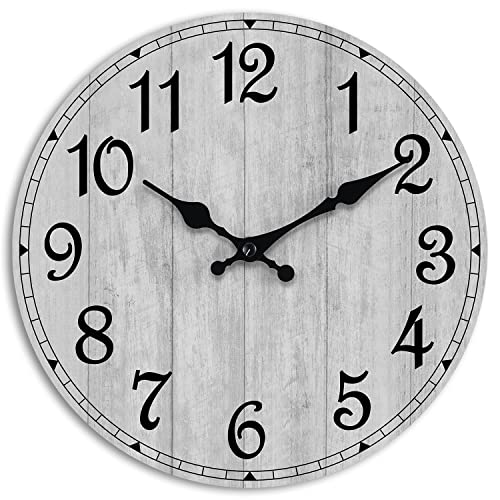Welcome to our comprehensive guide on clock movements, where we dive deep into the world of timepiece mechanisms. If you’re on the hunt for a clock movement that suits your specific needs, you’ve come to the right place. In this article, we will explore various types of clock movements, and their functionalities, and provide valuable insights to help you make an informed decision. Whether you’re a hobbyist, a clock enthusiast, or someone looking to repair or build a clock, we’ve got you covered.
Types of Clock Movements
Clock movements come in different types, each offering unique features and advantages. Let’s explore two popular categories: quartz clock movements and mechanical clock movements.
Quartz Clock Movements
Quartz clock movements are known for their accuracy, reliability, and ease of use. These movements utilize the oscillation of a quartz crystal to maintain timekeeping. Quartz movements are battery-powered and require minimal maintenance, making them ideal for modern timepieces.
Mechanical Clock Movements
If you’re a fan of traditional craftsmanship and appreciate the intricate workings of a clock, mechanical clock movements are an excellent choice. These movements operate through mechanical gears, springs, and weights, providing a captivating display of mechanical engineering. Mechanical movements can be further divided into key-wound and weight-driven categories.
Key-Wound Clock Movements
Key-wound clock movements require manual winding using a designated key. This process allows you to engage with the clock’s mechanism and adds a nostalgic touch to your timepiece. Key-wound movements are often found in antique or vintage clocks and offer a charming aesthetic.
Weight-Driven Clock Movements
In contrast to key-wound movements, weight-driven clock movements employ hanging weights to power the clock’s mechanism. These weights, typically made of brass, descend gradually, supplying energy to keep the clock running. Weight-driven movements are commonly found in grandfather clocks and large wall clocks, adding a sense of grandeur to any space.
Factors to Consider When Choosing a Clock Movement
Before purchasing a clock movement, it’s essential to consider several factors to ensure it aligns with your requirements and preferences. Let’s delve into the key aspects you should evaluate.
Accuracy
Accuracy is a crucial factor when selecting a clock movement. Quartz movements are renowned for their precise timekeeping, often losing or gaining only a few seconds per month. On the other hand, mechanical movements, although captivating, might have slightly less accuracy, typically within a few minutes per week. Consider your desired level of accuracy based on the clock’s intended purpose.
Power Source
Determining the power source for your clock movement is vital. Quartz movements rely on batteries, which provide convenience and longevity. Mechanical movements, whether key-wound or weight-driven, require manual winding or raising of weights. Consider the practicality and aesthetic appeal of the power source based on your preferences.
Maintenance
Clock movements differ in their maintenance requirements. Quartz movements generally need minimal maintenance beyond battery replacements. In contrast, mechanical movements may require periodic lubrication, adjustments, and occasional cleaning. Take into account the level of commitment you are willing to invest in maintaining your clock movement.
Aesthetics
Clock movements contribute significantly to the overall aesthetics of a timepiece. Consider the design, finish, and style of the movement, ensuring it complements your clock’s appearance. Whether you prefer the sleekness of a quartz movement or the intricate gears of a mechanical movement, choose a style that resonates with your vision.
Compatibility
Ensure the clock movement you select is compatible with the clock case or dial you plan to use. Consider the shaft length, hand sizes, and mounting dimensions to guarantee a proper fit. Taking accurate measurements and consulting the movement’s specifications will help you find the perfect match.
How to Install a Clock Movement
Installing a clock movement may seem daunting at first, but with the right tools and guidance, it can be a straightforward process. Let’s outline the basic steps involved in installing a clock movement.
Step 1: Gather the Necessary Tools
Before beginning the installation, ensure you have the following tools at hand:
- Screwdrivers
- Pliers
- Wrenches (if applicable)
- Clock oil or lubricant (for mechanical movements)
Step 2: Remove the Old Movement (if applicable)
If you are replacing an existing movement, carefully remove it from the clock case. Take note of any specific connections or attachments that need to be detached before proceeding.
Step 3: Prepare the New Movement
Inspect the new clock movement for any damage or defects. Familiarize yourself with its components, including the mounting brackets, shafts, and hands. If necessary, consult the manufacturer’s instructions for additional guidance.
Step 4: Attach the Hands
Carefully attach the clock hands to the designated shafts on the movement. Ensure they are secured tightly to prevent any wobbling or misalignment. Take caution not to bend the hands during installation.
Step 5: Mount the Movement
Position the movement into the clock case, aligning the mounting brackets with the appropriate holes or slots. Secure the movement in place using screws or other provided fasteners. Double-check that the movement is seated properly and securely within the case.
Step 6: Test and Adjust
Once the movement is installed, insert the required batteries (for quartz movements) or engage the winding mechanism (for mechanical movements). Set the time and observe the movement to ensure smooth operation. If necessary, make any adjustments to the hands or regulating mechanisms to achieve accurate timekeeping.
Troubleshooting Common Clock Movement Issues
While clock movements are designed to be reliable, occasional issues may arise. Here are some common problems you might encounter and possible solutions:
Uneven Timekeeping
If your clock consistently loses or gains time, it may require adjustment. Consult the movement’s documentation or seek professional assistance to regulate its timekeeping mechanism.
Noisy Operation
Clock movements should operate quietly. If you notice excessive ticking, grinding, or other unusual noises, consider cleaning and lubricating the movement. If the issue persists, contact a professional for further evaluation.
Hands Stuck or Loose
Stuck or loose hands can disrupt timekeeping and aesthetics. Ensure the hands are correctly attached and tightened. If the issue persists, check for obstructions or misalignments within the movement.
Pendulum Swinging Irregularly
For clocks with pendulums, irregular swinging may indicate an alignment issue or a need for pendulum adjustments. Verify that the pendulum is properly attached and aligned, and ensure any regulating mechanisms are correctly set.
Maintenance Tips to Prolong the Lifespan of Your Clock Movement
To keep your clock movement functioning optimally and extend its lifespan, consider the following maintenance practices:
Regular Cleaning
Periodically clean the movement using a soft brush or compressed air to remove dust and debris. Avoid using harsh chemicals that could damage delicate components.
Lubrication
For mechanical movements, apply clock oil or lubricant to the necessary points as recommended by the manufacturer. Proper lubrication helps reduce friction and ensures smooth operation.
Pendulum Adjustments
If your clock features a pendulum, periodically check its swing and adjust the regulating mechanisms as needed. Ensure the pendulum is level and free from any obstructions.
Inspection and Replacement of Worn Parts
Regularly inspect your clock movement for signs of wear or damage, such as worn gears or broken springs. If necessary, consult a professional clock repair technician to replace worn components and restore optimal functionality.
Conclusion
In conclusion, choosing the right clock movement involves considering factors such as accuracy, power source, maintenance requirements, aesthetics, and compatibility. Whether you opt for a precise and low-maintenance quartz movement or the mechanical marvel of a key-wound or weight-driven movement, understanding your preferences and the specific needs of your clock is essential. By following proper installation procedures and performing routine maintenance, you can enjoy the beauty and functionality of your clock movement for years to come.
Now, armed with the knowledge provided in this comprehensive guide, you are well-equipped to select and install a clock movement that perfectly suits your requirements. Happy timekeeping!

Meet Aron Crock, a clock hardware expert with seven years of hands-on experience. Aron’s journey into the world of clocks began as a hobby, but his passion soon turned into a profession. He’s known for his deep understanding of clock mechanisms and is highly respected in the field. Aron’s dedication to making clocks tick with precision and his innovative ideas have made him a key player in the industry. He’s committed to pushing the boundaries of clock technology and leaving a lasting impact on the world of timekeeping. Aron Crock is a true clock enthusiast, and his expertise shines through in his work.







